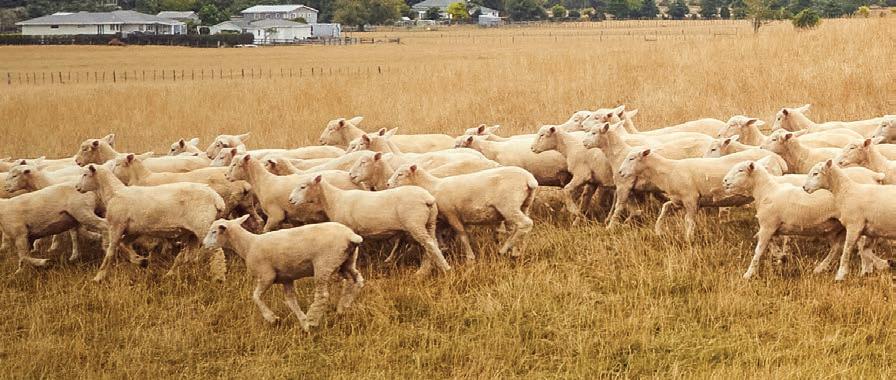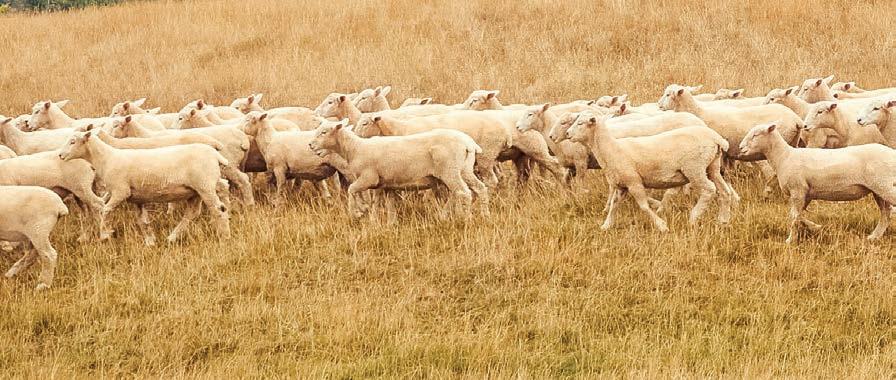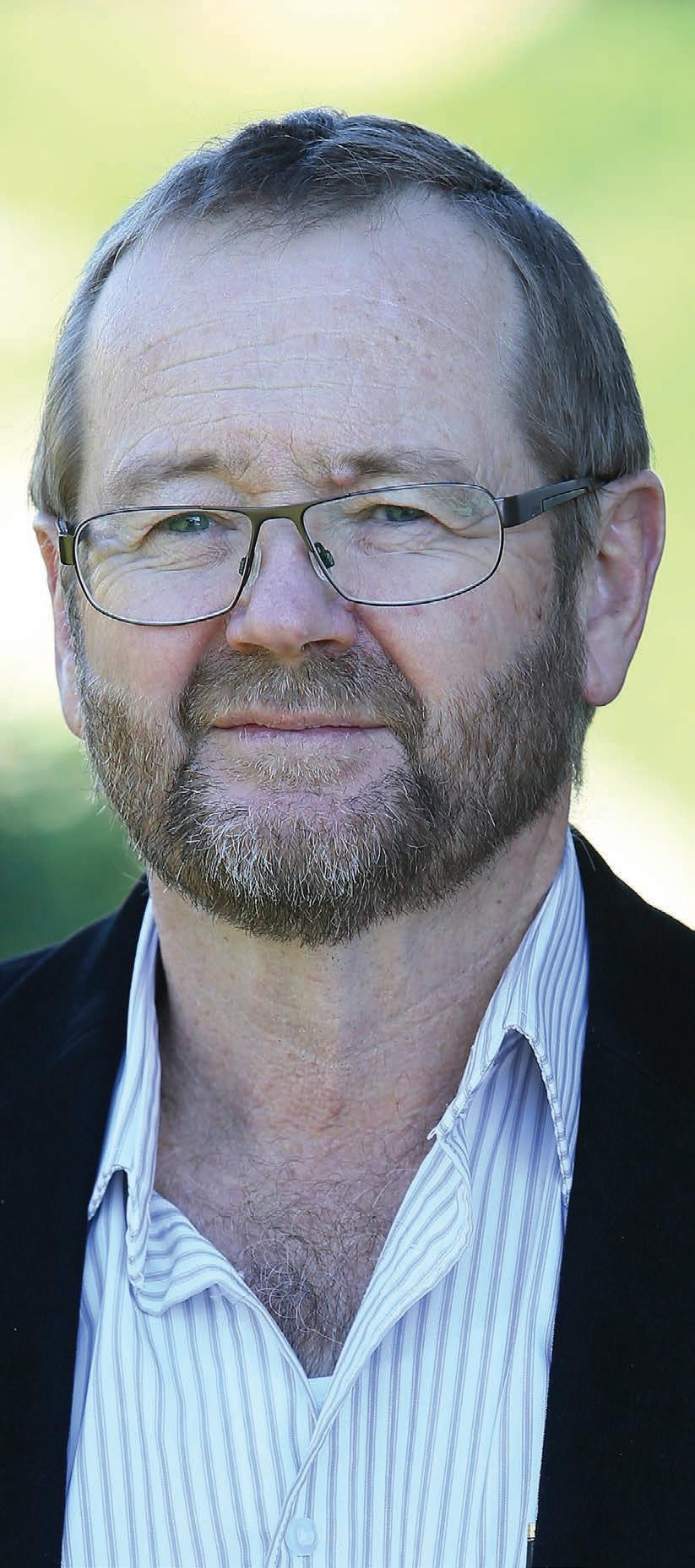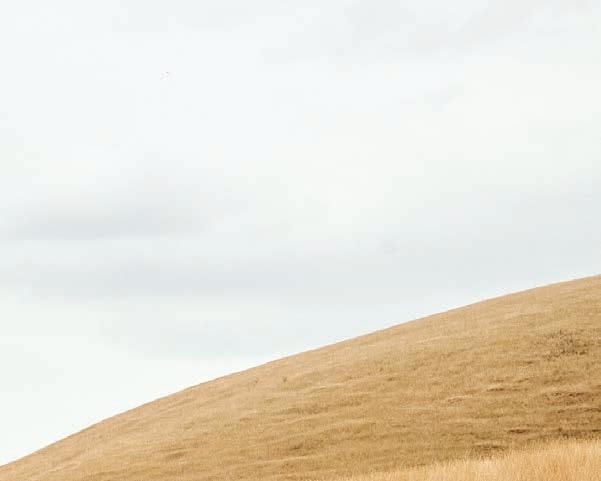
10 minute read
Dairy needs migrant workers
FARMERS WEEKLY – farmersweekly.co.nz – April 5, 2021 15 Dairy needs migrant workers
Gerald Piddock gerald.piddock@globalhq.co.nz
FEDERATED Farmers and DairyNZ are requesting the Government allow 500 migrant dairy staff into New Zealand to avoid a worker shortage in the new milking season.
These staff would fill positions in the mid to high skilled employment category that New Zealanders new to the sector or in lower skilled dairy assistant roles would be unsuitable for in time for the 2021-22 season, Federated Farmers employment spokesperson Chris Lewis says.
The request comes after the two organisations commissioned a survey in March to gain a better understanding of the staffing issues facing dairy employers.
That survey drew 1150 responses in just one week.
Results told us that 49% of dairy farmer respondents were currently short-staffed; 46% had vacancies unfilled for more than three months; and nearly a quarter had been unable to fill a gap on their team for more than six months.
Lewis says most of the responses came within the first 48 hours of the survey’s release and the level of respondents who said they were short-staffed confirmed what he had long suspected.
“It worked with what we have been hearing the whole way through and sometimes you just don’t know until you survey, and it reconfirmed what we have been saying for the last 12 months,” Lewis said.
The application for the 500 staff includes them being paid a minimum of $25.50/hour.
The dairy employment website FarmSource currently has around 1100 jobs. The hourly wage being offered for the bulk of these jobs is also $25.50/hour. Farmers are willing to pay this to get anyone to work for them.
While there were some dairy assistant roles on offer that could attract New Zealanders new to the industry, the biggest gap was in workers who had at least two or more years’ experience in the industry.
Compounding the issue was rampant levels of farm staff being lured and poached by other farmers to come and work for them.
He says if the Government declined the request, then it needed to articulate an alternative to the industry.
“What is their plan then, because we’re exhausting our options,” he said.
The survey also asked farmers what they were doing to retain their staff and 65% had increased salaries and wages, 42% had adjusted rosters to allow more time off and 36% were boosting efforts on upskilling and training staff.
This has helped these farmers retain their staff but it hasn’t attracted new staff because there’s no people to attract because the labour market was so tight.
“If you’ve got good staff onfarm and they’re doing a good job, that’s going to be the quickest way to not make the situation any worse,” he said.
Lewis says they are hoping the travel bubble with Australia and the Pacific Islands will be established because it will free up MIQ space by over 40% and could ensure any migrant staff can go through quarantine in time to be on farms and working from JuneJuly.
“It’s looking very, very doable,” he said.
The Government will make an announcement on a bubble with Australia on April 6 and is working towards a bubble with the Cook Islands for May.
GAP: Federated Farmers employment spokesperson Chris Lewis says the request for 500 migrant workers will fill a big shortage in the mid to high skill range on dairy farms.
Chris Lewis Federated Farmers




INTRODUCING THE LATEST TOOL IN THE TOOLBOX FOR YOUR HOGGETS…

News Internet of Things network to roll out

HOOKED UP: Mike Smith says WISPA providers should have the IoT network up and running nationally by late next year. Richard Rennie richard.rennie@globalhq.co.nz
FARM connectivity is due for a major boost, thanks to the installation of a nationwide network enabling more on-farm devices to communicate with each other via the internet.
Spearheaded by the Wireless Internet Service Providers Association (WISPA) NZ, the network initiative aims to be completed by late next year. It will lift the ability of more farms to utilise devices often linked through the “Internet of Things”, or the IoT network.
Typical farm IoT applications include sensors, monitors and equipment that can be programmed to communicate with each other via a specific wireless bandwidth, and not necessarily via a computer or laptop.
WISPA chair Mike Smith says almost 70% of New Zealand’s rural population is covered via WISPA services and the group’s members are working to enable 5000 repeater sites around the country with the equipment.
“Basically, we are putting an extra layer of IoT capable bandwidth over our members’ existing wireless bandwidth,” Smith said.
“At present, say a farmer wants to monitor soil moisture, they can only connect systems through proprietary networks – this will be open to any company and end-user who wants to utilise this technology.”
Often IoT equipment only transmits small amounts of data periodically.
Smith says member providers are now enabling their equipment with the IoT capable LoRaWAN (long-range wide-area network) that assures distant transmissions with low power consumption.
“As a system it has very good propagation and, while it is early days, we are working on a large, rapid network rollout,” he said.
While the plan is national, Smith says every district covered by a provider will have technology installed that meets that particular region’s demands and transmission challenges.
He envisages there will ultimately be a single entity managing the IoT network, which will be open to any company that wants to link its equipment up through it.
“We have a number of pilot trials under way and have a proof of concept plan in place,” he said.
While IoT is relatively well understood by the rural sector after several years of media coverage, its application has been largely limited to early adopting farmers so far.
But data demand on farms has been estimated by Business Insider Intelligence to surge to one million data points collected every day on every farm by next year, compared to only 100,000 in 2014.
“So IoT is getting to the point this has to be done for a mass market. We bring local and regional operators to it, having one network with the same technology, managed long-term,” he said.
He estimated current proprietary network systems bought onto farms with IoT tech was adding about $2000-$3000 to the cost of the technology’s installation.
Agritech NZ chief executive Brendan O’Connell says his members welcome the establishment of the IoT network, with value to be earnt both here and abroad.
“There has been a rural IoT roll out in other countries, including Scotland, and our challenge is similar to other countries with hills and valleys,” O’Connell said.
“From our perspective we have a dual interest in agri-tech being able to deliver value here. If we can create an example of what we learn here, it becomes additional value for exporting our technology as well.”
He says the nimbleness of smaller WISPA providers makes them ideally placed to deliver network solutions specific to districts, with service personnel in those districts to back up the network technology.
Sometimes

IT TAKES THE RIGHT FENCING GEAR

(& A GOOD UTE)
Mike Smith WISPA

Whether you need a quick replacement for your break fencing or you’re planning a major re-fencing project, the team at Farm Source have the product range, the expertise, the convenience of Click & Collect and for a limited time, you even have the chance to win a new Mazda BT-50.
Synalit forecasts a break-even year
Hugh Stringleman hugh.stringleman@globalhq.co.nz
SYNLAIT may not make a profit this financial year because of sharply reduced orders from a2 Milk Company for packaged infant formula, rising dairy commodity prices and global shipping delays.
At the start of the season Synlait directors expected net profit in FY21 to be similar to last year’s $75 million, then in December they said net profit would be approximately half that of FY20.
They have now said the anticipated result for FY21 will be “broadly break-even”, which includes the possibility of no profit overall and a small loss in the second half, which is already two months old.
When releasing its first-half results, Synlait said the December downgrade from major customer and minority shareholder a2MC was significant and sudden.
Until then, Synlait had been producing infant formulas for ongoing growth in demand.
“Our infant formula base powder production dropped significantly as we reset inventory levels,” the company announcement said.
“This has resulted in low utilisation of infant driers throughout FY21, which materially impacts Synlait’s profitability until a recovery occurs.”
The company’s current share price around $3.45 has kept pace with the large reductions in profitability forecasts.
It halved in the 11 months since the March/April 2020 covid-19 havoc and has retreated all the way from $10-plus over the past two years.
In the first half revenue was up 19% to $664m, helped considerably by the sales performance of newly acquired Oceania consumer goods processor Dairyworks contributing $112m revenue.
Earnings before interest, tax, depreciation and amortisation (Ebitda) were down 29% to $47.7m and net profit was down 76% to $6.4m compared with the previous corresponding period.
The new guidance implies that a small loss will be made in the second half of the financial year.
In the full year, Dairyworks is going to contribute Ebitda between $15m and $20m.
Cash flow in the first half was negative $69m compared with positive $12m, due to lower product margin mix, higher dairy prices and milk payments and shipping delays impacting cash collections.
Consumer-packaged infant formula sales were down 16% to 18,085 tonnes and production of IF base powder was down 61%.
Milk collection in the first half was up 18% to 56m kg milksolids as the North Island milk pool increased.
Synlait has a current milk price forecast of $7.20/kg, revised in January, now somewhat below the Fonterra range of $7.30-$7.90.
“We continue to be in a period of significant uncertainty and volatility as Synlait faces several headwinds,” chair Graeme Milne said.
Chief executive Leon Clement says the company’s focus was now on management of costs and capacity, and bringing forward some value creation initiatives.
“We will need time to get through this, but we remain confident about our future,” Clement said.
“Our investment phase is complete and we have the capacity, capability, and the customer base to generate significant value.
“Covid-19 hit us late, but we will emerge from the pandemic a stronger, more sustainable company.”
He identified operational savings totalling $20m this year and $200m more value to be extracted over two or more years from new consumer products and the already announced new multinational customer for the Pōkeno plant.
Total inventories were $406m on January 31, compared with $306m the year before.
Although all banking covenant ratios were met during the first half, the company is now talking with ANZ and BNZ to increase leverage ratios to manage any risk at the end of the financial year.
Net debt was $485m compared with $527m at the end of FY20 and $447m in the first half of FY20.
The banking covenants include minimum shareholders’ funds of $400m and a requirement that Ebitda be three times the interest expense.
Share capital on January 31 was $465m after a $200m equity raise completed in November during which 39% shareholder Bright Dairy of China maintained its position.
Leon Clement Synlait

TRYING TIMES: Chair Graeme Milne says Synlait is still in a period of significant uncertainty and volatility as it faces several headwinds.
BIONIC PLUS HOGGET – HELPING TO PUT THEM RIGHT WHERE YOU WANT THEM AT MATING




This new controlled release combination capsule releases abamectin and albendazole plus selenium and cobalt continuously for 100 days. By using a combination capsule in conjunction with management techniques such as refugia, the threat such as refugia, the threat of parasite resistance developing can be significantly reduced.


